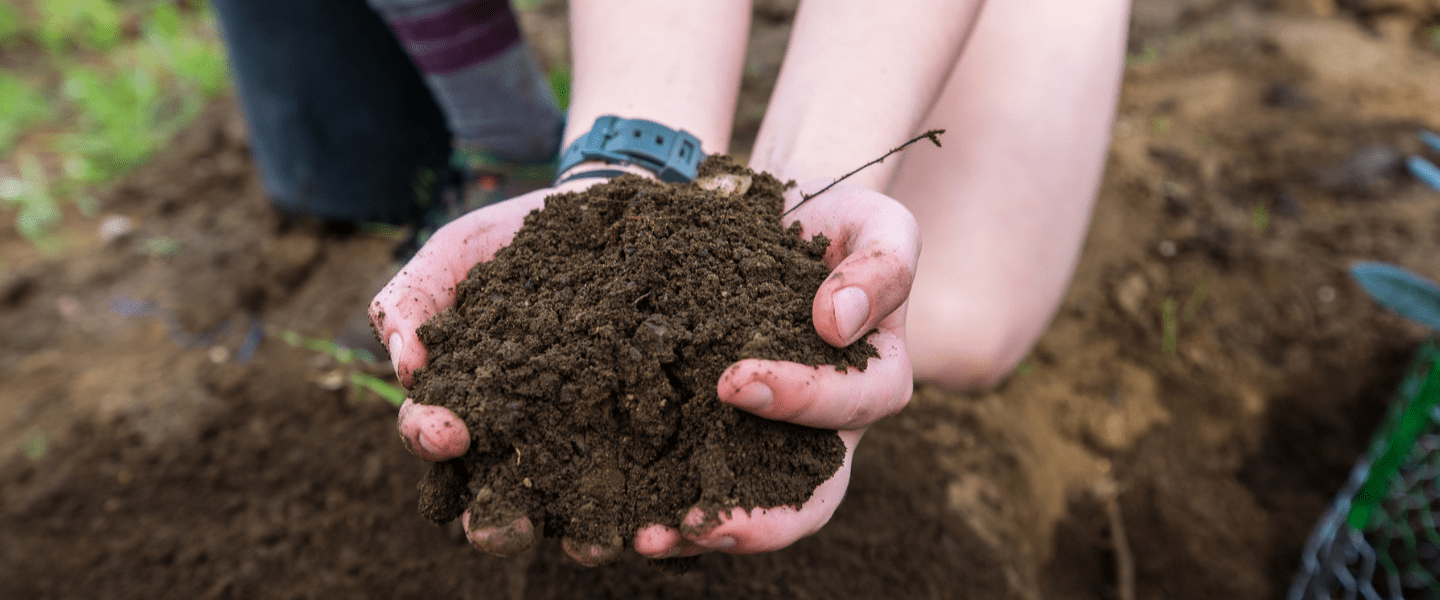As toxic ash carpeted many peoples’ yards during the recent LA wildfires, it highlighted an ongoing concern—the way our health is intricately connected with soil health.
Contaminated soil is an important human health concern. People can be exposed when we accidentally eat or breathe in soil particles, and young children—who are especially vulnerable—can be exposed when they play in contaminated soil, transferring soil from their hands to their mouths. Lead is a common soil contaminant. Childhood lead poisoning can cause a wide range of health impacts including developmental delays and learning difficulties.
As the recent wildfires burned, they released a hazardous mix of chemicals into the air including volatile organic compounds, toxic heavy metals, emerging pollutants such as PFAS and microplastics, and other fine particulate matter. That pollution eventually settles out of the air, and while some will be released into our waterways and beaches when it rains, creating its own environmental concern, soil is where some contaminants stick around for a long time.
This could exacerbate LA’s already precarious soil, which has been impacted by decades of legacy pollution from incompatible land uses, abandoned oil and gas wells, and waste disposal sites. In addition to immediately threatening human health and wellbeing, soil contamination undermines a critical resource that can help us build a more climate resilient future. Urban soils are the unsung superhero in our fight against climate change, supporting a litany of benefits. They mitigate stormwater runoff, protect against biodiversity loss, and support vegetation that can reduce the impacts of extreme heat and bolster urban food production.
The paradox of urban soil—part human health threat, part climate superhero—makes its management a particularly fraught endeavor. And our current approaches fall short by not providing enough information about soil health or effective support for remediation of contaminated soil.
One fundamental challenge is a lack of high-resolution soil contamination data and accessible soil testing. While an event like the wildfires may release contamination over a large area, that contamination is superimposed over legacy contamination that is patchy and uneven. Testing is essential to delineate the extent of contamination hotspots. Yet we lack public access to reliable and affordable soil testing services to get this information, even as methodological advances have made it easier than ever to collect.
And even when we have good information about soil contamination, our remediation options fall short. A common approach, one used in California’s largest environmental cleanup of the former Exide site, is called dig and haul. This process involves scraping the upper layer of the soil and disposing of it, usually in peripheral vulnerable communities already facing multiple environmental threats. The process of excavating and depositing contaminated soil generates a considerable amount of contaminant-laden dust that exposes workers and nearby communities. As a city-wide approach to soil contamination, dig and haul is not feasible as it can be prohibitively expensive for individuals to take on or for governments to fund at the necessary scale. In addition, this approach exports a critical environmental resource out of our city, ultimately moving the problem, not solving it.
Alternatively, investing in soil banking programs and more extensive composting hubs can help us address soil health on a city-wide scale. Soil banking or exchange programs, such as those in NYC, retain clean fill excavated from development sites for other purposes such as site restoration and community gardens. This fill, which is typically low in nutrients, can be amended with compost resources to provide clean soil throughout the city. Clean soil is an important tool in addressing soil contamination because it can dilute soil contaminants, bind contaminants into forms that are less harmful to humans, and provide a protective layer between people and potentially contaminated soils. Soil banking programs and composting hubs offer the added co-benefits of reduced trucking miles and diverting food waste from landfills.
Using plants to extract contaminants from the soil, i.e. phytoextraction, was evoked in a LA Times article that suggested sunflowers could “magically and majestically” improve the soil. Unfortunately, sunflowers alone are not a solution. However, leveraging the collective power of plants, in partnership with fungal communities – as we see in nature – has shown promise as an alternate soil remediation strategy that can be done in place, eliminating or reducing the need for soil removal, and at a fraction of the cost of dig and haul. Recent bioremediation studies on three contaminated sites in Los Angeles found California native plant-fungal combinations significantly reduced mixed metal and organic contaminant concentrations in a one-year period while restoring overall soil health.
Our soil is the foundation of all life and it’s worth saving. We need long-term, equitable, city-scale solutions for our health and our future, including accessible soil testing, widely-available clean soil and compost, and comprehensive bioremediation options. And all of these solutions are most powerful when they are developed in partnership with the communities most impacted, who bring indispensable local knowledge of urban soil contamination and insights into high priority remediation sites.
Sunflowers do provide a sort of magic, hope and beauty and solace during dark times. And for that reason alone, we should plant sunflowers. But as far as our soil is concerned, we need better solutions.
Kirsten Schwarz is an Associate Professor of Urban Planning and Environmental Health Sciences at UCLA.
Danielle Stevenson is the Founder and President of the Center for Applied Ecological Remediation.
Dustin Herrmann is Principal Scientist at TreePeople, a SoCal-based non-profit organization.
Monika Shankar is a PhD candidate in the Environmental Health Sciences Department at UCLA.
Jennifer Jay is a Professor of Civil and Environmental Engineering at UCLA.

